Fatty tumor lipoma is common and non-cancerous. They are made of fat cells and feel like soft lumps under the skin. Even though they are usually harmless, some people might find them unattractive or feel uncomfortable. This can make individuals think about having them removed.
Key Highlights
- Lipomas are harmless, slowly growing tumors made of fat cells. They usually feel soft and can move under their skin.
- Even though they are mostly safe, lipomas can cause discomfort or look unattractive. This may lead people to look for ways to remove them.
- Dr. Valeria Simone is a trusted surgeon in Texas who focuses on lipoma removal. She offers methods like liposuction and other less invasive surgeries.
- It is important to understand what causes lipomas. This includes genetics, lifestyle choices, and some health conditions. Knowing this helps to find the best treatment.
- Getting a professional diagnosis and treatment from a skilled medical expert is important for safe and effective lipoma removal.
Understanding Lipoma: The Basics
A lipoma is a small, harmless lump made of fat tissue that forms under the skin. It usually does not hurt and moves easily when you touch it. Most lipomas are small, but their growth can be affected by genes, lifestyle, and health. Knowing about these factors is important for diagnosing and treating them.
What is Lipoma?
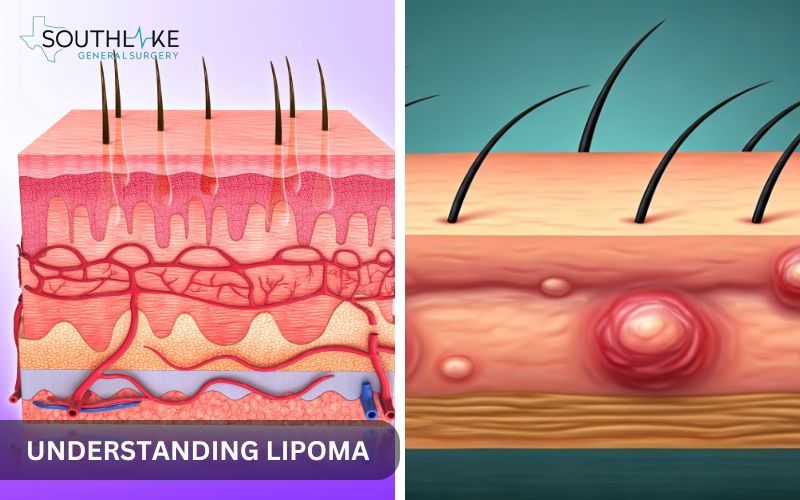
A lipoma is a type of lump that forms from extra fat tissue. There’s no need to worry about the word “tumor.” Lipomas are benign. This means they are not cancerous and usually do not cause harm. They are the most common kind of soft tissue tumor. People of all ages, both young and old, can get them.
Lipomas grow slowly and usually do not hurt. They feel soft and squishy when you touch them under your skin. Typically, they are small, like a pea, or a few centimeters wide. However, sometimes they can become much larger.
Lipomas and cancerous tumors like liposarcoma are not the same. Though both are called tumors, lipomas do not spread to other parts of the body. In contrast, liposarcoma is a type of cancer that comes from fat cells.
Common Misconceptions About Fatty Tumor Lipoma
There are several myths about the cause of lipomas. A common belief is that being overweight leads to them. While gaining weight can cause old lipomas to grow larger, it does not create new ones. Lipomas are harmless tumors and are not simply extra fat that comes from being obese.
Another myth is that lipomas are just a skin problem. In reality, they come from fat cells in the layer beneath the skin. This layer is called the subcutaneous layer. Lipomas may look like lumps, but they do not come from the skin itself.
Lastly, some people believe that all lipomas do not hurt. Most lipomas are painless, but some situations, like Madelung’s disease, can cause painful lipomas. This happens often around the neck and shoulders. It is important to recognize these cases to get the right diagnosis and treatment.
Identifying Lipoma: Signs and Symptoms
To find a lipoma early, look for its common signs. A lipoma is soft, can be moved around, grows slowly, and often doesn’t hurt. Bigger lipomas might press on nerves, which can be uncomfortable.
You usually see them where there’s more fat under the skin, like on the shoulders, back, neck, arms, and thighs. If you feel a lump with these signs, talk to a healthcare provider for a checkup.
Typical Locations and How They Feel
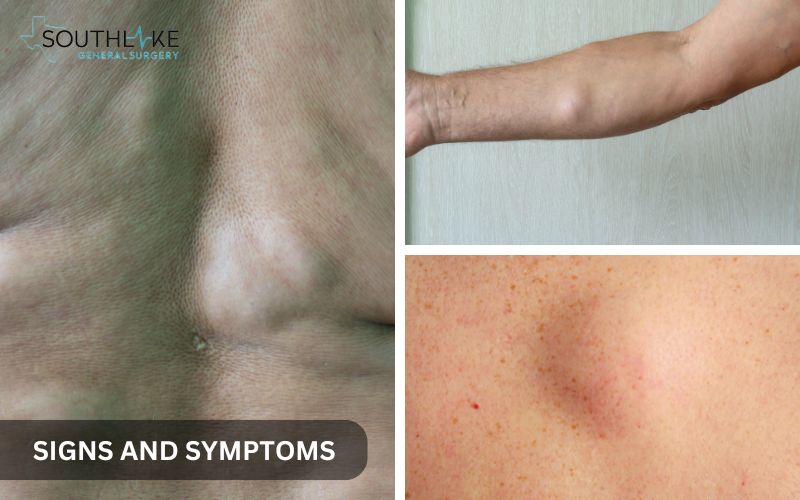
Lipomas usually grow in areas with subcutaneous fat. This is the layer of fat right under the skin. You often see them on the upper back, shoulders, arms, buttocks, and upper thighs. They can appear in various locations across the body. However, they are not as common in places that have very little fat.
- A lipoma feels soft and a bit rubbery when you touch it, like dough.
- You can usually move them a little with gentle finger pressure. They sit in the fat layer, which lets them shift slightly.
Lipomas can sometimes grow bigger and go deeper. This may affect nearby nerves or muscles and can cause pain or discomfort. A physical exam can help find any pressure on the surrounding tissues. If you feel this way, you should consult a healthcare provider.
When Should You Be Concerned?
Lipomas are growths made of fat cells that are not harmful. However, if they start to grow quickly or feel hard, you should get medical advice. It’s important to watch for changes in a lipoma’s texture if it does not move, or if it causes you pain.
Deep lipomas can impact internal organs and muscles. When this happens, they might show various symptoms and need special tests. It’s important to carefully tell the difference between shallow and deep lipomas.
- If you have concerns about lipomas, talk to a doctor.
- A healthcare professional can give you the right diagnosis.
- They can also check for other health issues.
- A doctor will guide you on what to do next.
- It’s best not to try to diagnose yourself for your safety.
The Causes Behind Fatty Tumor Lipoma Formation
The exact cause of lipomas is not fully known, but both genes and the environment seem to help them grow. If someone in your family has had lipomas, you might be more likely to get them too.
Things like being overweight, high cholesterol, and not being active can also increase the chances. Additionally, health problems such as diabetes and liver disease can raise the risk of getting lipomas.
Genetic Predisposition and Risk Factors of Fatty Tumor Lipoma
Many signs show that genetics might lead to lipomas in several people. If your family has had lipomas before, you might have a higher chance of getting them as well.
- Genetics is important in how lipomas develop.
- Some conditions, like Madelung’s disease and Gardner syndrome, have strong ties to genetics.
- Knowing about these genetic links can help people understand their risks.
- There are other risk factors too. Alcohol use disorder and a high-fat diet might lead to the development of lipomas. However, more studies are needed to prove these links.
Lifestyle Factors Influencing Lipoma Development
Genetics is important in how lipomas form. But lifestyle choices may also help them grow. Researchers are studying how different habits relate to lipoma development. We need more evidence to make clear connections, but some links are being explored.
- Researchers are looking at obesity as a possible reason for lipomas. While it may not be a direct cause, having extra fat might increase the chance of abnormal fat cells growing. This could lead to lipomas.
- Other habits, like what you eat and how much you exercise, are also being studied. There isn’t clear proof that these habits cause lipomas. Still, having a balanced diet and regular exercise is good for your health. It may also have an impact on the development of lipomas.
Professional Diagnosis: Dr. Valeria Simone’s Approach
Dr. Valeria Simone is a top general surgeon in Texas who focuses on lipoma removal. She performs a careful diagnosis that starts with a physical examination. She also talks in detail about the patient’s medical history.
If the case is complex, she may suggest further tests like ultrasounds, MRI scans, or CT scans. These tests help to understand the size, location, and tissues around the lipoma.
Initial Consultation and Assessment
The journey to understanding and treating your lipoma starts with a thorough first consultation. Dr. Simone pays attention to you as a patient. She listens to your concerns and gathers information about your medical history. She will inquire about your family’s history with lipomas, any previous surgeries, and your general health.
- Dr. Simone does a careful physical examination of the lipoma. She checks its size, shape, texture, and where it is located.
- She also looks at nearby areas to see if there is any pain or trouble with movement.
- If the lipoma is larger or deeper, Dr. Simone may recommend extra tests. These tests could use advanced imaging, like a CT scan. This helps get a better view of the lipoma. It also helps in making the correct diagnosis and choosing the best treatment plan.
Advanced Diagnostic Tools and Techniques
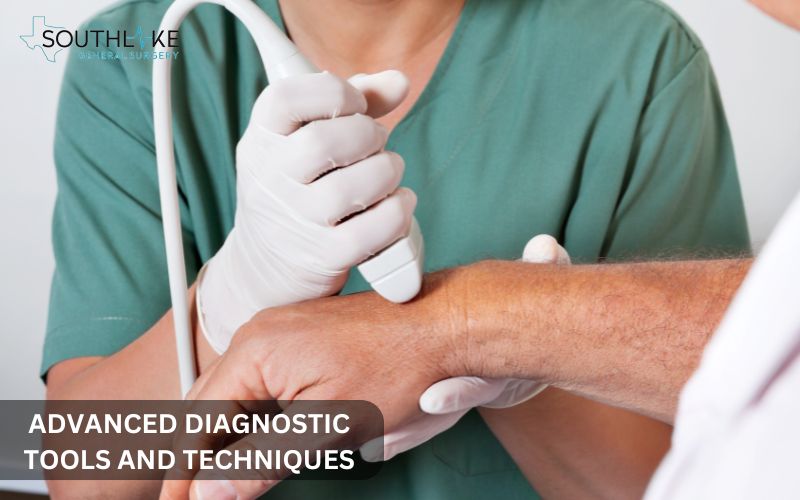
When Dr. Simone wants to see the lipoma better, he uses special tools to get a clear image. Some important imaging methods are:
- MRI scan: It shows clear images of soft tissues. This helps find out the size of the lipoma and where it is compared to other structures.
- CT scan: This is often used to look at the bones. It also gives important details about the lipoma. It helps tell it apart from other growths and finds any strange features.
- Ultrasound: This method uses sound waves and does not hurt you. It is great for checking lipomas close to the skin. It shows how deep they are and their link with nearby blood vessels and nerves.
Treatment Options Available in Texas, USA
Dr. Valeria Simone provides lipoma removal treatments that meet the unique needs and wishes of each patient. She offers a variety of options. You can choose minimally invasive surgery for faster healing.
There are also non-surgical options like liposuction. The choice depends on the size, location of the lipoma, and the patient’s health.
Minimally Invasive Surgery Techniques
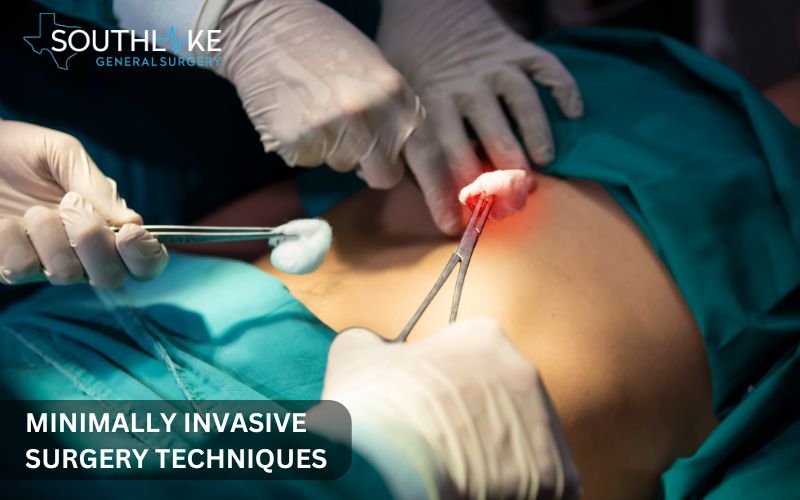
Minimally invasive surgery is a good choice for lipoma removal. It has several benefits compared to open surgery. These benefits include less pain and a faster recovery time. There are several common methods used for this type of surgery.
- Excision: Dr. Simone makes a small cut above the lipoma to take it out carefully. After that, he stitches the cut which creates a small scar. This way works well for smaller and lighter lipomas.
- Endoscopic removal: If the lipomas are larger or deeper, Dr. Simone might recommend using an endoscope. This is a tube with a camera. It goes through a small cut to help remove the lipoma and protect nearby tissues.
Non-Surgical Treatments and Their Effectiveness
In addition to less invasive surgery, there are non-surgical ways like liposuction. This method can help take out lipomas in some cases. Liposuction is popular for shaping the body. It can also remove smaller lipomas, especially in areas where a small scar matters.
- To remove a lipoma, the process starts with a small incision.
- A thin tube, called a cannula, is used to break down and suction out the fatty tissue.
- This method is effective for removing most of the lipoma.
- Still, it might not remove every fat cell. This means there is a small chance that the lipoma can return.
How well these non-surgical treatments work depends on several factors. This includes the size and location of the lipoma and details about the patient. During the consultation, Dr. Simone checks these points. She wants to find out if liposuction is the best choice for good results.
Preparing for Lipoma Removal Surgery
Getting ready for lipoma removal surgery can help the surgery go better and make recovery easier. Dr. Simone gives specific instructions to follow before the surgery. These may include doing tests or changing your medications.
If you talk about any worries you have about the surgery, anesthesia, or care after the surgery, it can help you feel more at ease during the entire process.
Steps to Take Before Your Procedure
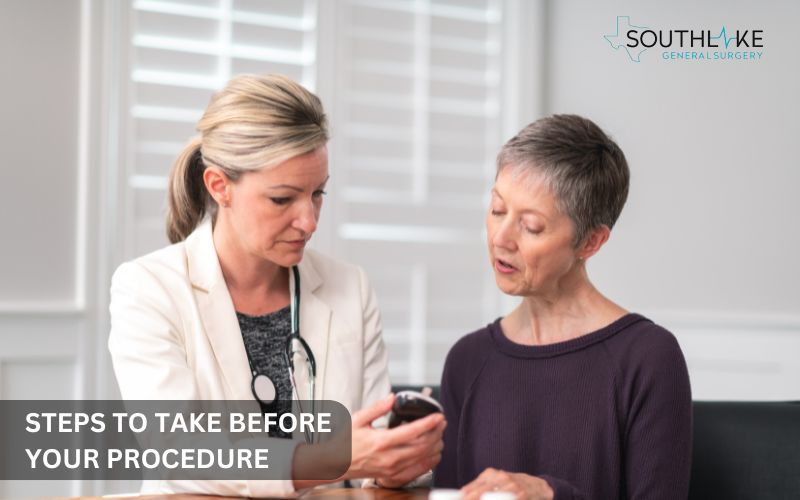
Before getting a lipoma removed, it’s important to follow several steps to ensure the surgery goes well. Your surgeon will give you detailed guidance to follow. However, some steps are similar for everyone.
You might need to fast for some time before your surgery. This is important if you have general anesthesia. Fasting can help prevent problems during the operation. Make sure to tell your doctor about any medications you take, even over-the-counter supplements. Some of these might need to be changed or paused for a little while.
On the day of your surgery, arrive at the facility early. This will give you enough time to complete paperwork and change into your surgical clothes. Having someone drive you home is a great idea! You typically cannot drive right after any kind of surgery, even if it is a minor one.
Understanding What Happens on the Day of Surgery
On the day of your lipoma removal surgery, a team of medical experts will take you to the operating room. In the operating room, an anesthesiologist will give you a local anesthetic. This will numb the area around the lipoma. Alternatively, he may give you general anesthesia. This will help you sleep during the surgery.
- A doctor called an anesthesiologist and gave anesthesia.
- Your surgeon did the surgical excision using clean ways.
- A small cut was made in the skin to take out the lipoma.
- The cut was closed with stitches, and a dressing was put on.
Most patients feel okay during this time. With good care after surgery, you can expect to feel better comfortably.
Post-Operative Care and Recovery
Proper care post-lipoma removal surgery is crucial for healing and preventing complications. Dr. Simone and her team will provide instructions on wound care, pain management, and activity restrictions for a smooth recovery.
Immediate Aftercare Tips
After your lipoma removal surgery, it is very important to follow the care instructions from your healthcare provider. Doing this will help you heal properly and avoid complications. These instructions typically explain how to care for your wound, how to manage pain, and what activities to limit.
- Keep the area where the surgery happened clean and dry.
- Follow what your surgeon said about changing the dressing.
- A little swelling, bruising, and discomfort are normal.
- Call your doctor if you feel severe pain, have redness, draining, or a fever. This could mean there is an infection or other problems.
Most patients can begin light activities a few days after surgery. You can often return to your normal routine within one or two weeks. Avoid doing intense activities, heavy lifting, or anything that puts pressure on the incision until your surgeon gives you the okay.
Long-Term Health and Wellness Post-Removal
After your lump is removed, it is important to stay healthy so that it does not come back. Lipomas are usually safe, but keeping a balanced diet and exercising regularly helps.
A healthy lifestyle is very important for your overall well-being. Look for any changes in your skin. If you notice anything new, getting help early can make a difference.
The Role of Southlake General Surgery in Your Treatment
Southlake General Surgery, led by Dr. Valeria Simone, focuses on lipoma removal in Texas. They offer tailored treatment plans and excellent care, using the latest facilities and a skilled team.
They support patients from diagnosis all the way after the surgery. Their goal is to provide a smooth and successful experience.
Why Choose Dr. Valeria Simone and Her Team?
Choosing a good healthcare provider is crucial for your health. This is true for treatments like lipoma removal, which need skilled hands. Dr. Valeria Simone and her team at Southlake General Surgery have lots of experience. They truly care about their patients and give high-quality care.
- Dr. Simone is a board-certified surgeon who specializes in minimally invasive surgeries.
- Being a board-certified general surgeon shows her commitment to keeping up with new medical knowledge.
- Dr. Simone is recognized for her caring attitude. She takes the time to listen, explain the procedures, and answer any questions. This helps her build trust and make patients feel comfortable.
Conclusion
Lipomas are usually harmless but can cause worries about looks or discomfort. If you find a fatty tumor, it is important to get medical advice. A proper diagnosis and treatment are key.
You might consider options like surgical removal, liposuction, or other care. Consulting a specialist, like Dr. Valeria Simone at Southlake General Surgery, ensures you get good care and smooth recovery.
Early detection and treatment can help prevent complications. You should practice good health habits to lower the chance of getting lipoma. Keep a healthy weight, stay active, and go for regular check-ups to feel your best.
Don’t wait to address any worries about fatty lumps. This will help you keep your health and feel confident. Your path to managing lipomas starts with informed choices and expert help.
Make an Appointment
To address your concerns about fatty tumors, or lipomas, schedule an appointment with Dr. Valeria Simone, MD. She is an expert surgeon at Southlake General Surgery in Texas, USA. You can call +1 (817) 748-0200 to discuss the best options for lipoma removal.
Dr. Simone has a lot of practice in surgical excision and lipoma removal. You will receive a professional approach that fits your needs. Get advice from a medical expert like Dr. Simone to help you make smart choices about your health.
Frequently Asked Questions
Can Lipomas Recur After Removal?
Surgery to remove lipomas usually stops them from returning, but sometimes they can come back. Some risk factors, like your genes and certain health problems, can increase the chances of getting new lipomas. To help avoid this, it’s a good idea to take care of your health and live a healthy lifestyle.
Medically Reviewed By: Dr. Valeria Simone MD
Board-certified General Surgeon at Southlake General Surgery, Texas, USA.
Follow us on Facebook and YouTube.
References:
- Kolb L, Yarrarapu SNS, Ameer MA, et al. Lipoma. [Updated 2023 Aug 8]. In: StatPearls [Internet]. Treasure Island (FL): StatPearls Publishing; 2025 Jan-. Available from: https://www.ncbi.nlm.nih.gov/books/NBK507906/
- Guler O, Mutlu S, Mahirogulları M. Giant lipoma of the back affecting quality of life. Ann Med Surg (Lond). 2015 Aug 11;4(3):279-82. doi: 10.1016/j.amsu.2015.08.001. PMID: 26468370; PMCID: PMC4556780.
- Charifa A, Azmat CE, Badri T. Lipoma Pathology. [Updated 2022 Dec 5]. In: StatPearls [Internet]. Treasure Island (FL): StatPearls Publishing; 2025 Jan-. Available from: https://www.ncbi.nlm.nih.gov/books/NBK482343/
- Lee YJ, Jeong YJ, Lee JH, Jun YJ, Kim YJ. Liposarcoma in the axilla developed from a longstanding lipoma. Arch Plast Surg. 2014 Sep;41(5):600-2. doi: 10.5999/aps.2014.41.5.600. Epub 2014 Sep 15. PMID: 25276658; PMCID: PMC4179370.
- Peev I, Spasevska L, Mirchevska E, Tudzarova-Gjorgova S. Liposuction Assisted Lipoma Removal – Option or Alternative? Open Access Maced J Med Sci. 2017 Oct 14;5(6):766-770. doi: 10.3889/oamjms.2017.186. PMID: 29104686; PMCID: PMC5661715.
- Xiong Y, Yang L, Zhen W, Fangyong D, Feng W, Ting L. Conservative and surgical treatment of pediatric asymptomatic lumbosacral lipoma: a meta-analysis. Neurosurg Rev. 2018 Jul;41(3):737-743. doi: 10.1007/s10143-016-0796-6. Epub 2016 Oct 28. PMID: 27796602.
- Bannayan-Riley-Ruvalcaba syndrome: MedlinePlus Genetics. (n.d.-b). https://medlineplus.gov/genetics/condition/bannayan-riley-ruvalcaba-syndrome/
- Cowden syndrome: MedlinePlus Genetics. (n.d.-b). https://ghr.nlm.nih.gov/condition/cowden-syndrome

